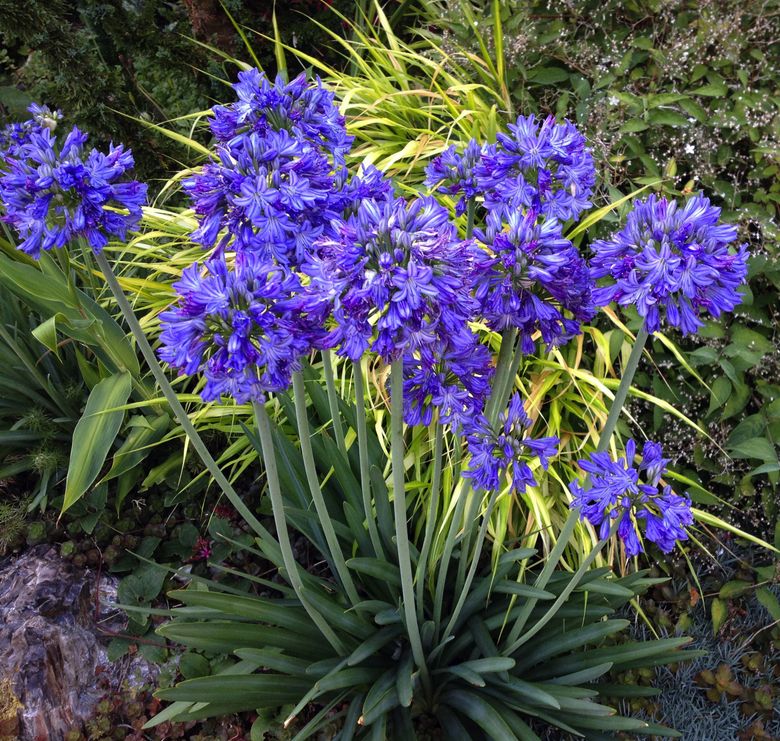Understanding the Art of Agapanthus Treatment: Essential Steps for Healthy Development and Vibrant Flowers
In the world of cultivation, the cultivation of agapanthus stands as a satisfying undertaking for those that seek to support these classy flowering plants. With their striking flowers and stylish vegetation, agapanthus has caught the attention of gardeners worldwide. However, attaining optimal growth and lively blooms requires a nuanced strategy that encompasses different necessary actions. From selecting the best variety to understanding trimming methods, the journey in the direction of cultivating prospering agapanthus plants is diverse and holds the key to opening the complete possibility of these agricultural treasures.

Selecting the Right Agapanthus Selection

When choosing the best Agapanthus selection for your garden, consider elements such as environment suitability, blossom color, and growth habit. Agapanthus, frequently referred to as Lily of the Nile or African lily, can be found in a selection of shades ranging from tones of purple and blue to white. Pick a blossom color that enhances your existing yard combination to create a harmonious landscape. Furthermore, consider the climate in your region to ensure the Agapanthus selection you select can thrive in your particular conditions. Some ranges are much more forgiving of cool temperatures, while others like warmer climates. Recognizing the growth behavior of different Agapanthus selections is critical for appropriate placement within your garden. Some varieties have a clumping development routine, perfect for containers or boundaries, while others have an even more spreading nature, appropriate for ground cover or mass plantings. By carefully examining these factors, you can select the best Agapanthus range to boost the charm of your yard.
Suitable Planting Problems
Thinking about the optimal ecological needs is necessary for effective Agapanthus farming. Agapanthus plants are sensitive to chilly temperature levels and should be protected from frost during winter season months.
To ensure healthy and balanced development and vibrant blossoms, plant Agapanthus light bulbs at a deepness of about 2-4 inches and space them 8-12 inches apart. Adding raw material, such as compost, to the soil can enhance drainage and fertility, advertising robust origin development. Mulching around the base of the plants aids keep moisture and subdues weed growth. Normal watering is essential, especially throughout the growing period, to maintain the soil regularly moist yet not soaked.
Watering and Fertilizing Tips
Maintaining correct dampness levels and giving necessary nutrients are key elements in the treatment regimen for Agapanthus plants. When it comes to sprinkling Agapanthus, it is critical to strike an equilibrium. These plants prefer continually damp dirt but are at risk to root rot if overwatered.
Fertilizing Agapanthus is vital for advertising healthy development and prolific blossoms. Use a well balanced fertilizer, such as a 10-10-10 formula, in the click for info very early spring as brand-new development emerges. By complying with these watering and feeding ideas, you can ensure your Agapanthus plants thrive and produce lively, long-lasting flowers.
Trimming Methods for Agapanthus
Pruning Agapanthus plants at the appropriate times and with proper strategies is essential for maintaining their health and promoting optimum development and blooming. The optimal time to prune Agapanthus is in late winter months or early springtime prior to brand-new development arises.
Deadheading spent flowers can additionally reroute the plant's power right into generating even more flowers rather than setting seeds. If you want to accumulate seeds for propagation, leave some blossoms to mature and dry on the plant.
Remember to use clean, sharp tools to make precise cuts and click to read minimize the risk of presenting illness. Agapanthus. Routine trimming will aid keep your Agapanthus looking neat and healthy while ensuring a plentiful display screen of lovely blossoms
Handling Common Pests and Conditions
After making sure appropriate pruning strategies for Agapanthus, it is important to attend to usual insects and diseases that can influence the health and vigor of these plants. One usual bug that influences Agapanthus is the Agapanthus gall midge.
Another common problem is fungal leaf area, which provides as dark sores on the fallen leaves. To avoid fungal diseases, ensure excellent air flow around the plants, stay clear of overhanging watering, and remove any type of contaminated leaves promptly. Additionally, Agapanthus plants can struggle with origin rot if they are grown in improperly draining dirt. To avoid this, plant Agapanthus in well-draining dirt and avoid overwatering. By being vigilant and taking prompt activity versus insects and conditions, you can aid you could look here your Agapanthus plants grow and create lively flowers.

Conclusion
To conclude, mastering the art of agapanthus care involves selecting the best selection, giving ideal growing conditions, correct watering and fertilizing, appropriate pruning techniques, and dealing with typical insects and conditions. By adhering to these important steps, you can make certain healthy development and vivid blossoms for your agapanthus plants. Remember to on a regular basis keep an eye on and preserve your plants to advertise their total well-being and long life.
To make sure healthy and balanced growth and dynamic flowers, plant Agapanthus light bulbs at a depth of about 2-4 inches and room them 8-12 inches apart. By following these watering and fertilizing suggestions, you can guarantee your Agapanthus plants thrive and generate vibrant, lasting flowers.
One common bug that impacts Agapanthus is the Agapanthus gall midge. In addition, Agapanthus plants can endure from origin rot if they are planted in badly draining pipes dirt. By adhering to these vital steps, you can guarantee healthy and balanced growth and vibrant blossoms for your agapanthus plants.
Comments on “Agapanthus Varieties: Choosing the very best for Your Landscape”